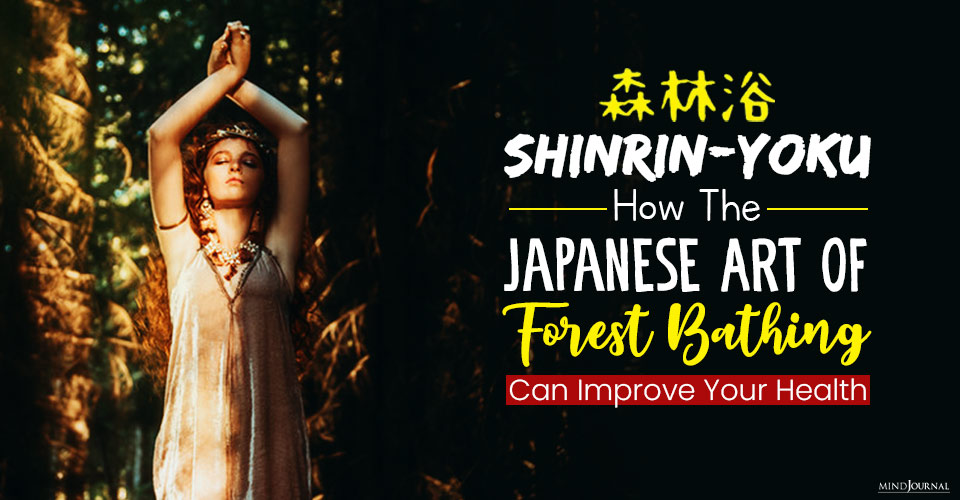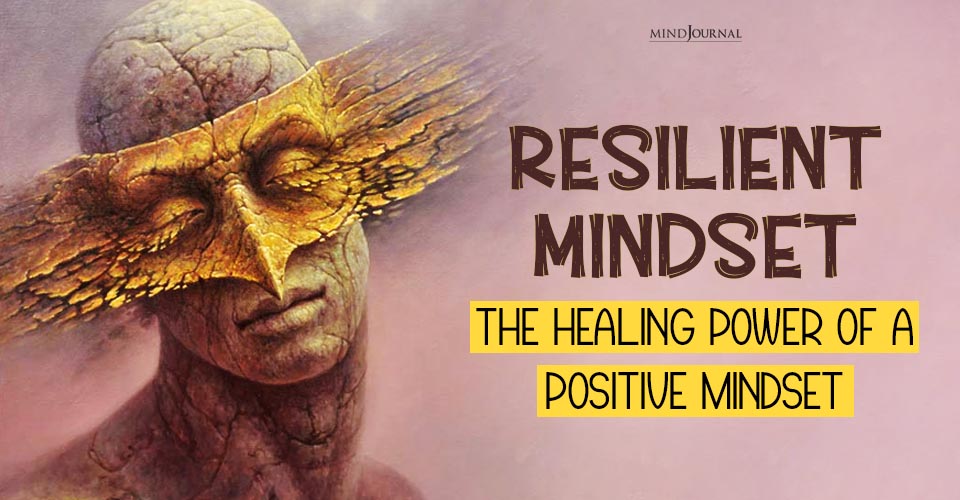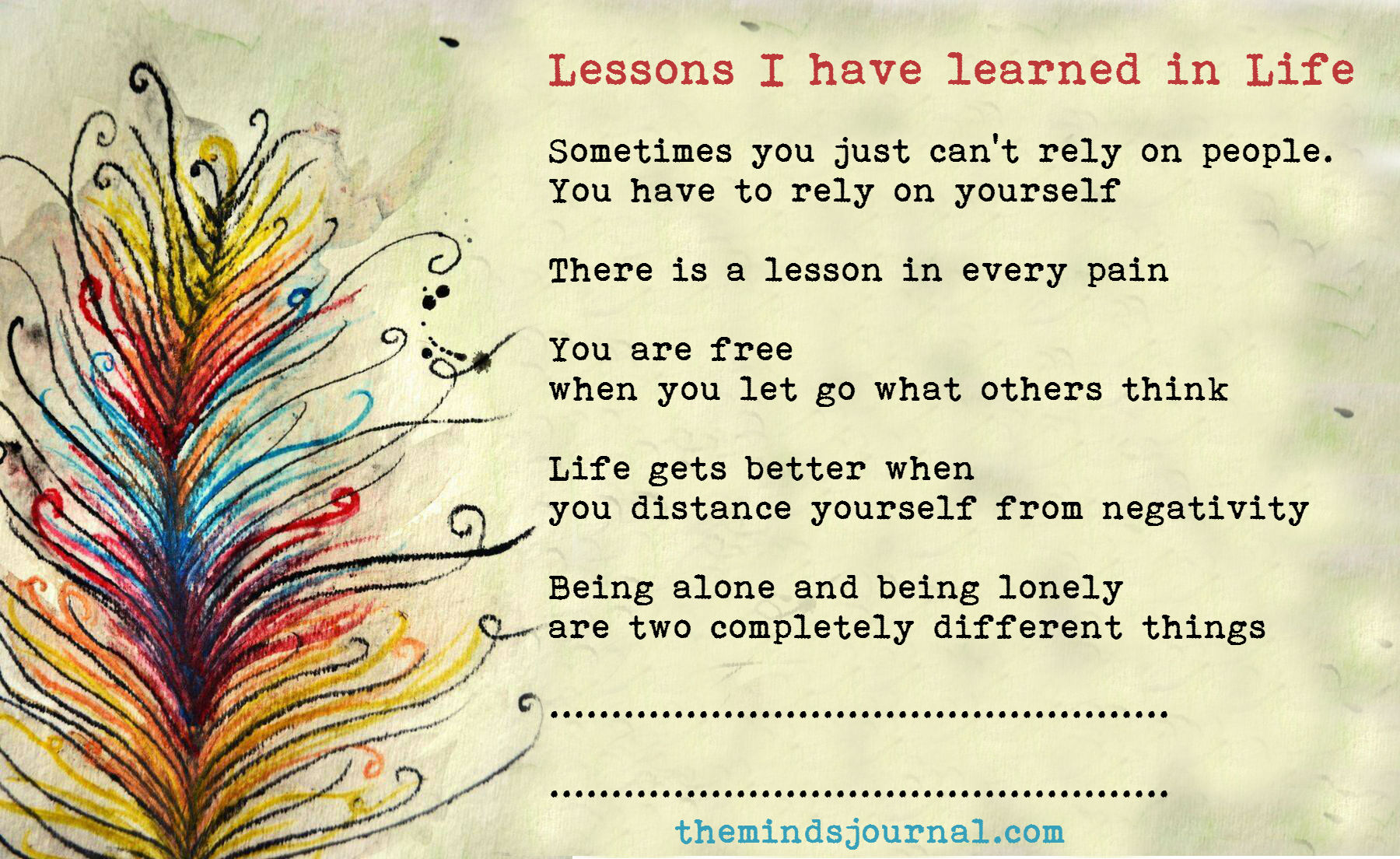Want to calm your mind, re-energize your body and tap into your inner self? Let me introduce you to “Shinrin-Yoku,” the Japanese mindfulness practice of Forest Bathing. And no, you don’t actually have to take a shower in the woods.
What is Forest Bathing?
Forest bathing or Shinrin-Yoku is a Japanese practice that has become widely popular across the globe. It is a form of nature therapy and is considered as an immersive experience which is beneficial for our mental and physical health. Sometimes referred to as forest therapy, ecotherapy or grounding, this relaxation practice involves being mindful and calm while being in the presence of nature – trees, lakes, hills etc. Although no bathing is involved in the literal sense, it requires us to absorb and take in the natural environment so that we can experience less stress & anxiety, feel relaxed, gain insights about ourselves and connect with nature. The objective is to be mindful and immerse ourselves and our senses in a natural setting.
There is no doubt that spending time in nature is beneficial for our overall health and well-being. However, unlike taking a hike or engaging in any therapeutic activities, Shinrin-Yoku is simply about being present in nature and being quiet and calm while being surrounded by trees. All you need to do is breathe deeply while mindfully observing the natural environment around you. It does not necessarily need any expert supervision and hence, you can practice it by yourself without being guided by any certified therapist. Moreover, this form of therapy can be beneficial for both children and adults in boosting their overall well-being.
Related: Tree Energy: How Trees Help Us Heal

Forest bathing is a form of therapy that involves a set of practices that goes beyond simply walking in the woods. The contemplative and conscious practice requires us to be mentally, physically, emotionally and spiritually present in the moment and take in the smells, sights and sounds of the forest and nature around us. Shinrin-Yoku or forest bathing “is a traditional Japanese practice of immersing oneself in nature by mindfully using all five senses,” explains a 2017 study. The study reveals that this practice is associated with different healing benefits and improves the immune system function, the cardiovascular system and the respiratory system. It also helps to reduce stress, anxiety & depression, boosts mental relaxation, gratitude and selflessness. “Forest bathing activities may significantly improve people’s physical and psychological health,” states another 2019 study.
Origin of Shinrin-Yoku
According to a 2016 study, “In Japan, forest bathing is a short leisurely visit to a forest, called Shinrin-yoku in Japanese, which is similar in effect to natural aromatherapy, for the purpose of relaxation.” Researchers proposed this concept as a natural preventive measure against lifestyle-related diseases. The term Shinrin-yoku was coined in 1982 by Tomohide Akiyama, the head of the Japanese Ministry of Agriculture, Forestry, and Fisheries to encourage Japanese people to visit forests more often. The Japanese term ‘Shinrin’ means “forest’, while the word ‘Yoku’ means bath. So the phrase can be roughly translated to bathing in a forest or absorbing the natural atmosphere in a forest through our senses. The practice became a crucial aspect of “preventive health care and healing in Japanese medicine” in Japan during the 1980s. It was introduced as a form of simple and effective type of mobile meditation in nature and was included in the nation’s national health program.
The idea was developed to help people cope with the stress and pressure of living a fast-paced and chaotic life, especially in the urban areas. It was believed that spending time under the relaxing canopy of a forest will help individuals experience the restorative mental, physical and spiritual benefits of nature, which proved to be highly effective. Although nature therapy is not a new concept, the simplicity and effectiveness of forest bathing made this practice highly popular among people who spend most of their time in stressful work environments, small apartments and endless traffic. It is simply a way to get us back to our natural roots and connect with nature.
Related: Ichigo Ichie: The Japanese Art of Living Every Moment
As the majority of the land in Japan is covered by forests, people can easily practice forest bathing and experience relaxation. Currently there are around 44 accredited Shinrin-Yoku sites in Japan with a strong focus on establishing the practice globally.
How to start forest bathing
Shinrin-Yoku is not really a complicated process that you will need to follow specific steps in order to practice this form of mindfulness and relaxation. “Forest bathing is a traditional practice characterized by visiting a forest and breathing its air,” states a 2019 study. It is as simple as being in nature and breathing mindfully. Although conceptually a forested area is recommendable, you could also practice in your local park or even in a garden. Studies show that visiting an urban park for around 20 minutes can be beneficial for your subjective well-being. Moreover, evidence shows that spending at least 120 minutes a week in nature, whether in longer durations or shorter visits, can be beneficial for our health.

However, if you want to have an authentic forest bathing experience and go beyond city parks, then here are few steps that can help you get the best experience and help you feel relaxed and calm –
1. Find the right place
Start by locating a forest, a conservation area, a nature park, garden, lake or a wooded area in your locality. Any location that is far from the hustle and bustle of the city and entrenched in nature will work fine. In case you are unable to access a forested area, you can choose to take a walk in your neighborhood park.
Related: Heal Yourself With The Chi Energy of Trees According to Taoist Masters
2. Select the right time
Choose a convenient time of the day when you can practice forest bathing on a daily or weekly basis. You should also decide on the duration of your practice. If you are a beginner, a shorter session (15-20 minutes) can be beneficial, while longer sessions of around an hour or more can also have significant mental, physical and spiritual benefits. However, if you plan on going for daily sessions then shorter durations can be more practical and effective as it will easily fit into your daily schedule. If you have a busy schedule, then longer sessions during the weekend can help.
3. Pause, breathe and be mindful
The main objective of Shinrin-Yoku is to fully immerse yourself in the natural environment and absorb the natural elements. Simply close your eyes, become aware of your senses and breathe mindfully. Slow down your thoughts and observe even the most subtle sensations. Be mindful about your environment and take in even the smallest details. Clear your mind of any stressful or anxious thoughts and live in the present moment.
4. Connect with nature
Look for a safe and comfortable place in the forest or park and just allow yourself to experience the innate connection you share with nature. Gently touch the trees and plants, feel the soft breeze and the sunlight touching your skin. Enjoy the cool shade under the canopy of the trees. Listen to the birds chirping, water flowing and leaves rustling. Look at the colors and patterns in nature. Observe all the different animals and insects around you and how they react to your presence. Smell the flowers and the soil by breathing deeply in the fresh clean air in the environment.
Related: Trees Have Feelings and Make Friends Too According To Studies
5. Allow yourself to simply be
Sit down and calmly watch how life unfolds around you while you’re amidst nature. Observe your surroundings, allow your mind to wander, let yourself feel whatever emotions arise naturally, give yourself permission to explore your surroundings and connect with your inner self. Let nature and forest bathing help you discover who you truly are by simply being your most authentic self.
6. Stay safe
Although nature can be healing and soothing, it can also be raw and wild. This is why it is very important that you take adequate safety precautions to protect yourself from probable threats and dangers. Always remain aware of your surroundings, stay in areas where other people are present or visible, walk through marked trails, ask security or rangers for safe locations and guidance, wear appropriate gear and remember to protect your skin from allergies, rashes and insect bites. You should also avoid wandering away too much while exploring as getting lost in a forested area is a common occurrence.
It is also important that you do some research about the flora and fauna about the location you plan on visiting for forest bathing. Remember staying safe should be your top priority and it is often best to bring a friend or a loved one with you. In case, you are determined to have a solo experience, let someone know about your location and the duration of your stay.
7. Carry necessary items only
If you plan on having an authentic Shinrin-Yoku experience by visiting a forest, then you need to pack for necessary supplies only, like food, water & a first aid kit, and keep your backpack or luggage as light as possible. It is important that you carry your smartphone for safety purposes, but make sure to use it only in case of emergency so that you’re not constantly distracted by it. Remember that it is not a hiking trip so avoid taking pictures for social media. Instead focus on the experience and sensations.
Related: Why You’re Addicted To Your Phone And How To Fix It

Things to keep in mind
Here are a few other steps to remember while you are engaging in and practicing Shinrin-Yoku –
- Do not practice it like a chore. Detach from your daily chaotic life as this practice is meant to relax your mind and make you feel happier from inside.
- Bring adequate food and water and remember to stay hydrated.
- Learn about the weather conditions before planning your trip.
- Research about the available services and help in the area.
- Make sure to carry first aid equipment and lotions to protect your skin.
- Look out for wildlife and avoid engaging with them.
- Make sure to carry a map of the region. Avoid relying on digital maps as your device may run out of battery or get damaged.
- As it is a nature-based sensory experience, do not let your devices and gadgets disturb your experience by distracting you.
- Avoid having any expectations or objectives. Forest bathing is about observing the sensations of being in nature.
- Avoid talking to your friend or other people while you are wandering aimlessly. You can freely share your experiences once it is over.
- Breathe deeply and mindfully observe your thoughts and emotions at the moment.
- Do not rush through the process. Take your time, slowly explore your surroundings and wander aimlessly. Practice for as long as you feel comfortable.
Can forest bathing help you?
Exposure to nature as a form of therapy is not a new phenomenon. We have always shared an instinctively intimate connection with nature, typically for our subsistence & production. Humans are naturally meant to deeply connect with nature. Hence, it is not surprising that spending time in nature and being around trees can lead to improved mental and physical health. “Greenspace exposure is associated with numerous health benefits,” states a 2018 study. Not only it helps to boost our immune system, physiological relaxation and stress recovery, it also has positive neuro-psychological effects in our nervous system.
Related: Mono No Aware: The Japanese Awareness Of The Impermanence of Things
Apart from stress, forest bathing can also help to reduce anxiety, depression, anger issues, impulsive decision-making and insomnia and also improves mental clarity. According to one 2021 study, nature exposure helps to improve blood pressure, cognitive function, brain activity, sleep, physical activity and mental health. It also helps to reduce the risk of cardiovascular disease and chronic disease. One 2019 study reveals that Shinrin-yoku plays a crucial role in significantly enhancing human physiology and psychological health. Research shows that this practice can have the following beneficial effects on our health and well-being –
- Increases activity of human natural killer cells (NK)
- Decreases blood pressure, heart rate & stress hormones
- Enhances activity of parasympathetic nerves & reduces activity of sympathetic nerves
- Increases levels of serum adiponectin & dehydroepiandrosterone sulfate
- Decreases fatigue, anxiety, confusion, depression and anger
- Boosts vigor and energy along with other psychological effects
Apart from these, empirical research has found that there are many other positive psychological and physiological effects of Shinrin-Yoku. It helps to prevent diseases, release healthy hormones, allows stressed areas of the brain to calm down, helps to skip burnout and boosts overall well-being. Not only will you be less sick, you will be able to recover faster from illness or injury, have healthy lungs and heart and experience better memory and focus.
Here are some other general benefits of forest bathing –
- Builds a positive body image
- Boosts self-confidence, self-esteem & self-awareness
- Improves emotional intelligence
- Enhances social skills and improves intimate relationships
- Helps to avoid or control unwanted, intrusive thoughts
- Reduces anger, jealousy and other negative emotions
- Decreases self-doubt, insecurities and fears
- Improves sleep
- Increases ability to cope with addictions and cravings
- Develops empathy and compassion
- Better decision making skills and mental clarity
- Helps experience happiness, mindfulness and inner peace
Related: 5 Things You Might Try to Improve Your Mental Health
One 2013 study also shows that apart from mental, emotional and physical benefits, Shinrin-yoku can also be spiritually beneficial as well. “Benefits included increased inspiration and feelings of connectedness to a broader reality, both important for spiritual well-being,” added the study. It positively affects how we value nature and makes us feel more responsible towards our natural environment. It inspires a sense of awe, connectedness, purpose and “faith in a larger reality.”
What forest bathing is not
Shinrin-Yoku is not like hiking, camping or taking a trip to the woods to chill and relax. It is not a power walk through the forest. It is about slowing down your mind and yourself so that you can fully immerse yourself in nature and allow your senses to experience the environment surrounding you. However, it should not be confused with hiking or trekking which can be more exciting and thrilling than relaxing. Shinrin-Yoku is less challenging and more about healing. It is neither about exploring wilderness and identifying plants, flowers and animals or their benefits. It is about connecting with nature.
Related: 5 Brain Benefits Of Hiking According To Science
Moreover, it should also not be considered as an alternative to medical treatment even though it is a form of therapy and is proven to have significant health benefits. This practice can help us boost our mental and physical well-being but it should not be used as a replacement for medical diagnosis and treatment by health professionals. Forest bathing should not be rushed. It is a meditative and leisurely activity where you wander through the forest and engage with the natural world using your senses.

Forest bathing is soul soothing
Nature exposure promotes a positive and healthy connection with nature and heals our mind, body and spirit. This nature-based practice is a preventative measure which is highly beneficial for our physiological and psychological health. Even if you are unable to stroll in a forest, implementing the healing strategies in your local park or any urban area with enough trees or a lake can help you experience the beneficial effects. All you need to do is “stop and smell the roses”.
Shinrin-Yoku can not only help you experience inner peace and calm, but also make you happier, feel less stressed and build stronger relationships.
Related: Ikigai: The Japanese Secret That’ll Transform Your Outlook On Life











Leave a Reply